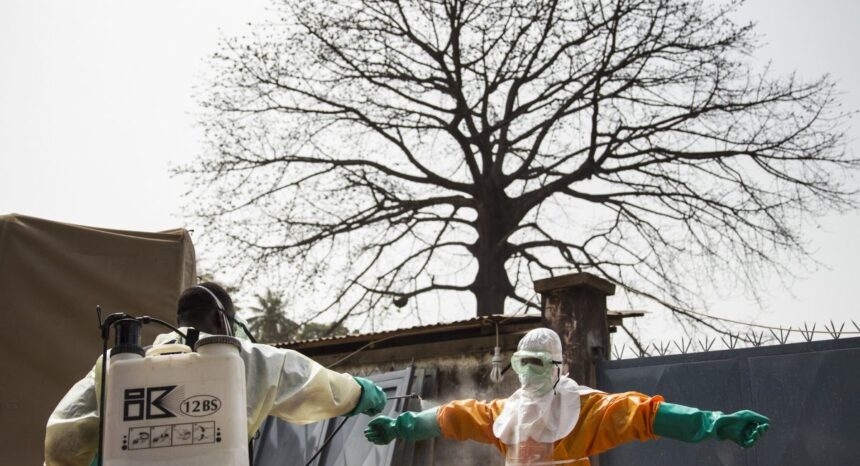Working as the medical reporter for The Canadian Press, Helen Branswell found herself in the midst of an epidemic.
The outbreak of SARS, or severe acute respiratory syndrome, which started in China in November 2002 came to Toronto three months later, and Branswell was still relatively new to the health beat. “I was just starting to get my feet under me, and then all of a sudden this weird new disease emerged, and not only did it emerge internationally, it landed in Toronto,” she said.
The developing situation was full of unknowns, including the disease’s mode of transmission. Health topics already may be foreign to reporters without subject-area expertise, and covering the spread of a virus that not even the experts yet understand can seem particularly daunting. Branswell, now a veteran health reporter at STAT who is known for her work covering infectious diseases, offered some reassurance.
“Something like SARS, it was so brand new that nobody had a ton of experience,” she said. “In some respects, a health emergency is just another news story.”
In fact, this is the cornerstone of Branswell’s advice to reporters preparing to cover epidemics. She advised nimble and responsive reporting in an interview with Journalist’s Resource, among other tips:
- Remind readers that information on the outbreak is subject to change. “At the start of an outbreak, not everything is known, and you want people to understand that if information changes, it’s not necessarily because people have been hiding information, it’s because people have learned more.”
- Reporters should internalize this as well: “Understand that the knowledge that you’ve acquired may also change, and listen for that change and incorporate it into your reporting.”
- Regardless of which diseases might come your way, it’s a good idea to familiarize yourself with epidemiology and the basic modes of transmission for infectious diseases. Understand key concepts such as incubation period, direct and indirect transmission and what it means for a disease to be airborne or vector borne. Infectious diseases follow patterns, so even if the specifics of an epidemic are unknown, it helps to have this working knowledge.
- Understanding the basic modes of transmission for infectious diseases will help you accurately convey an epidemic’s risk to the public. “Once you know how something is spreading, the risk to other people will become much more apparent,” Branswell said. (However, she reiterated that this information is always subject to change, mentioning the recent discovery that Zika can be transmitted sexually.)
- Knowing the fundamentals of epidemiology also helps in interviews. Sources will be busy during an outbreak, so it’s important to be prepared, skipping questions that could easily be answered elsewhere.
- Make sure the experts you’re quoting really are experts. Branswell suggested checking publication histories to verify their expertise–look for recent work in the subject area. It’s also a good idea to cross-reference what they’re saying against the statements of other experts. Branswell advised wariness of “wannabe experts” who pop up during epidemics.
- Establish public health contacts before the outbreak. The World Health Organization and Centers for Disease Control and Prevention are good places to start.
- Epidemiologists and infectious disease specialists are also important contacts. Branswell noted that anthropologists can offer another important angle as well, adding cultural context to stories.
- Know your audience when reporting on an epidemic. “During the SARS outbreak, I was really covering it from the Toronto point of view,” Branswell said. “I was not trying to daily write a piece that encompassed both what was happening in Toronto and what was happening in Hong Kong … that would’ve been very hard.”
- While narratives about the people most directly affected by an infectious disease are compelling stories, establishing those contacts can be time consuming and challenging for various reasons (privacy is one concern), especially at the height of an outbreak. Branswell recommended tailoring your coverage to the demands of the moment.
Other resources:
Branswell co-authored a tutorial on covering Ebola for the World Federation of Science Journalists, with useful tips for reporting on a variety of epidemics.
The Nieman Foundation for Journalism’s resources on covering pandemic flu are widely relevant as well.
The WFSJ offers additional toolkits for reporters.
For the basics on epidemiology, the CDC has this guide and video.


Expert Commentary